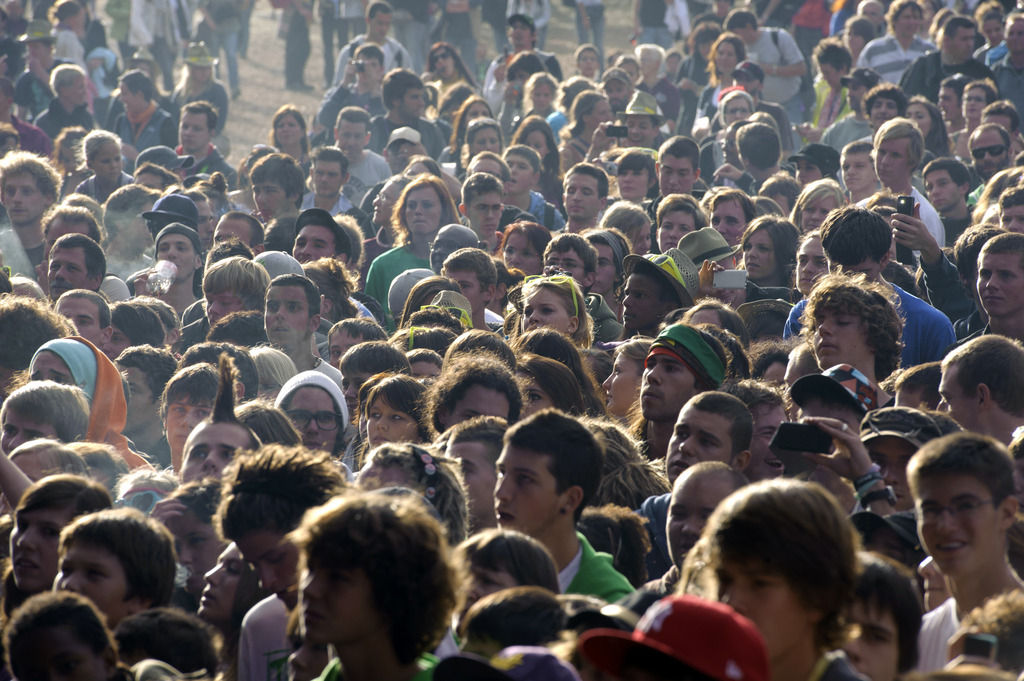Swiss population continues rapid growth

Switzerland’s population jumped by nearly 85,000 people in 2011, according to the Federal Statistics Office, with the majority of cantons experiencing population growth. The highest growth rates were seen in Fribourg, Vaud and Zug.
Figures released on Thursday showed a population increase of 1.1 per cent which is comparable to growth experienced in 2007 and 2009, the Statistics Office said.
One in eight people live in the largest five Swiss cities of Zurich, Geneva, Basel, Lausanne and Bern, while nearly half of the population resides in a city with more than 10,000 inhabitants. Zurich is Switzerland’s largest city at 377,000 people, and the tiny village of Corippo in canton Ticino, population 12, is the country’s smallest.
The new population numbers include Swiss citizens and foreigners, with the exception of those with short-term residence permits and those who have been seeking asylum in Switzerland for less than one year. The foreign population rose by nearly 50,000 people to 1.815 million, making up 22.8 per cent of the total Swiss population.
Most of the foreign population – 63.3 per cent – comes from eurozone states. The most-represented nationalities are Italians at nearly 16 per cent, Germans at 15.3 per cent, Portuguese at 12.3 per cent and Serbians at 5.8 per cent.
Switzerland’s total population at the end of 2011 was 7,954,700. On August 2 the Statistics Office announced the country would surpass eight million inhabitants sometime in the summer of 2012.
Switzerland’s population has more than tripled since 1860, when it stood at 2.5 million. The strongest period of growth occurred between 1950 and 1970, when the population grew by an average 1.4 per cent every year. That rate slowed dramatically between 1970 and 1980 to 0.15 per cent because of immigration restrictions and the economic crisis in the mid-1970s.
Since 2000, Swiss population growth has been around 0.9 per cent annually but has stood at one per cent or higher since 2007.
Cities and urban communities in Zurich and the Lake Geneva region have grown dynamically over the past decade, according to the Association of Swiss Cities.
Winterthur, Lausanne and the city of Zurich grew by between ten and 14 per cent since the previous census – above the average national population growth of 9.2 per cent.
The strongest growth – not counting communes which merged – was recorded by the commune of Bassersdorf in canton Zurich, which has seen its population rocket by 50.2 per cent since 2000. It was followed by the Geneva communes of Plan-les-Ouates (46.4 per cent) und Le Grand-Saconnex (38.3 per cent).
One consequence of this has been the increase in cities and urban communities with overstretched property markets.
Between 2007 and 2011, the number of cities or towns with a vacant home rate of less than 0.2 per cent rose from 12 to 27. In summer 2011, seven had a rate of less than 0.1 per cent.

In compliance with the JTI standards
More: SWI swissinfo.ch certified by the Journalism Trust Initiative











You can find an overview of ongoing debates with our journalists here . Please join us!
If you want to start a conversation about a topic raised in this article or want to report factual errors, email us at english@swissinfo.ch.